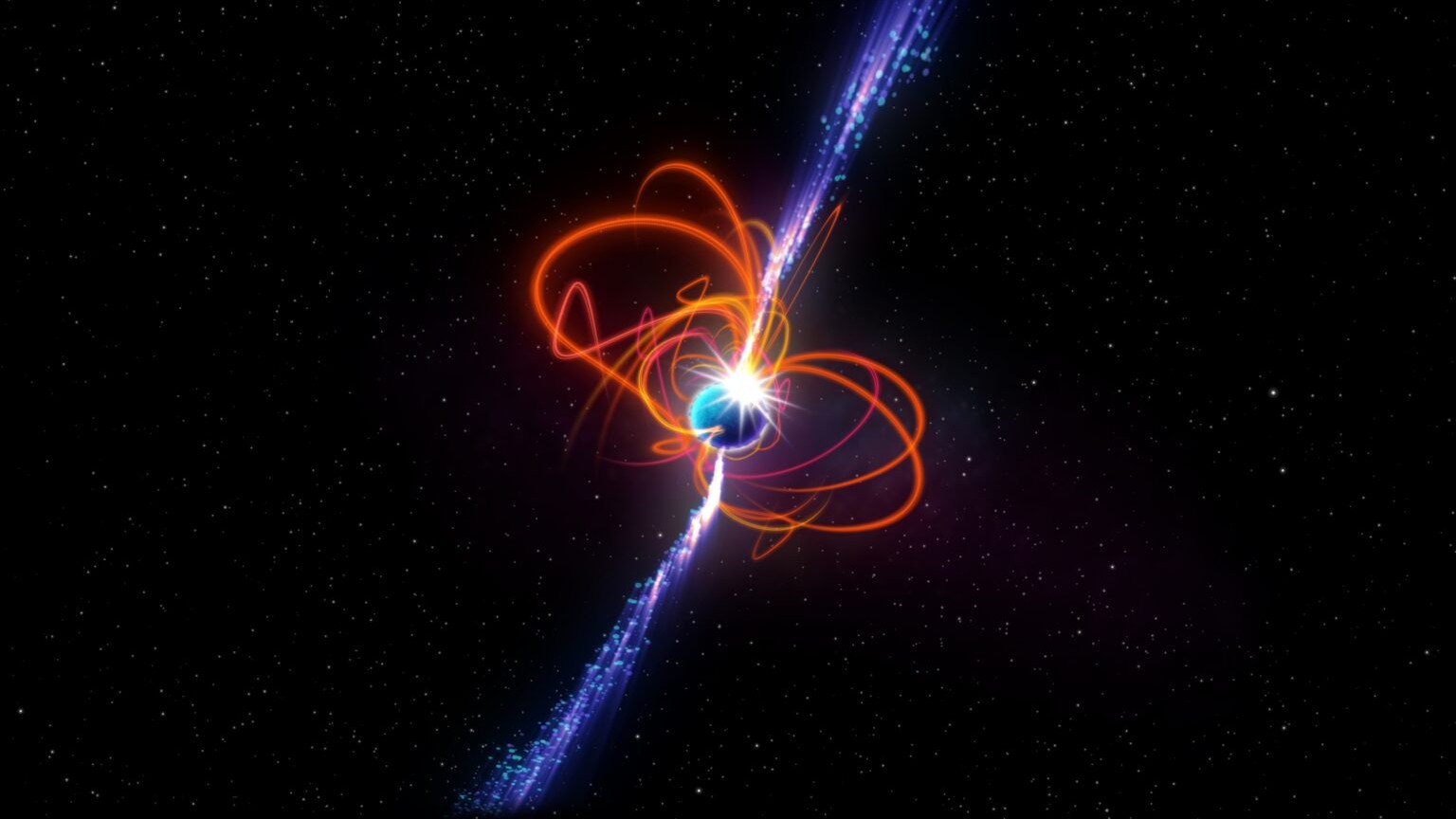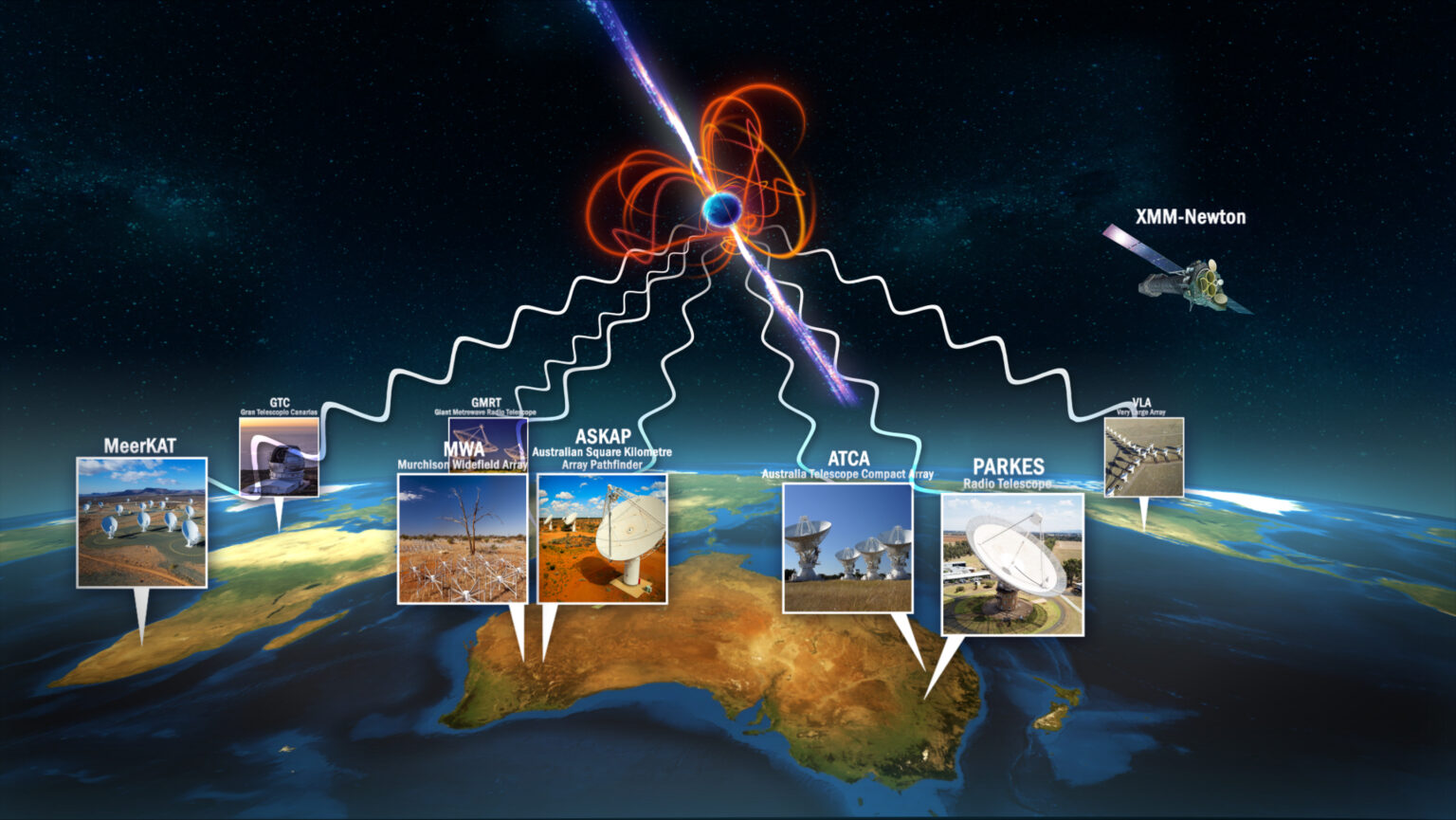Ultrabright stellar object is shining beyond the 'death line,' and no one can explain it
A slowly rotating, ultrabright object 15,000 light-years from Earth defies every logical explanation that astronomers have thrown at it.

Astronomers have discovered a new class of stellar object that seems to be defying death in inexplicable ways.
The object, located about 15,000 light-years from Earth, appears to be a magnetar — the collapsed heart of a once-giant star, now cramming a sun's worth of mass into a ball no wider than a city, while crackling with a magnetic field more than a quadrillion times stronger than Earth's.
These tiny, twirling balls can emit ultrabright jets of electromagnetic radiation as they spin, including radio waves that pulse to steady, mysterious rhythms that typically repeat every few seconds or minutes. These radio pulses usually stop entirely after a few months or years, as the magnetar's rotation slows to a point dubbed the "death line" — a theoretical threshold beyond which the star's magnetic field becomes too weak to generate any more high-energy radiation.
This newly discovered magnetar, however, still seems to be blazing with steady, bright radiation from beyond the death line — and it has been doing so for more than 30 years.
Related: Massive, volcano-like eruption may explain dead star's mysterious slowdown
"The object we've discovered is spinning way too slowly to produce radio waves — it's below the death line," Natasha Hurley-Walker, a radio astronomer at Australia's International Centre for Radio Astronomy Research (ICRAR) and lead author of a new study on the object, said in a statement. "Assuming it's a magnetar, it shouldn't be possible for this object to produce radio waves. But we're seeing them."
If confirmed, this ultralong-period magnetar could represent a new class of stellar object that defies all current theoretical models.
Sign up for the Live Science daily newsletter now
Get the world’s most fascinating discoveries delivered straight to your inbox.
Blinking beyond death

Scientists first discovered the strangely persistent magnetar — dubbed GPM J1839−10 — in September 2022, using the Murchison Widefield Array, a radio telescope array in the Australian outback. Their observations showed that the object pulsed with bright radio waves every 22 minutes, intensely shining for approximately five minutes at a time before dimming again.
This was already an extraordinary observation; as most radio-emitting magnetars pulse every few seconds or minutes, this object's 22-minute cycle made it the longest-period magnetar ever discovered. That ultralong cycle also suggested that the magnetar was spinning extremely slowly — beyond the death line.
To learn more about the inexplicable object, the researchers compared observations of the magnetar from half a dozen other radio telescopes around the world, as well as examined archival data going back to 1988. To the team's astonishment, they saw the same object appear in the oldest dataset, pulsing at almost the exact same 22-minute interval, virtually unchanged for the past 33 years.
These peculiar qualities — the object's slow rotation, its ultralong pulse period and the extreme longevity of its radio emission regime — defy all models imposed upon it, the researchers wrote. It's possible that the object is not a magnetar at all. It could be a white dwarf — another type of stellar remnant — which is much larger than a magnetar and rotates more slowly. However, the team added, this object's radio emissions are at least 1,000 times brighter than the brightest white dwarf ever detected.
The matter is far from settled.
"This remarkable object challenges our understanding of neutron stars and magnetars, which are some of the most exotic and extreme objects in the universe," Hurley-Walker said. "Whatever mechanism is behind this is extraordinary."
The team's research was published July 19 in the journal Nature.

Brandon is the space/physics editor at Live Science. His writing has appeared in The Washington Post, Reader's Digest, CBS.com, the Richard Dawkins Foundation website and other outlets. He holds a bachelor's degree in creative writing from the University of Arizona, with minors in journalism and media arts. He enjoys writing most about space, geoscience and the mysteries of the universe.










